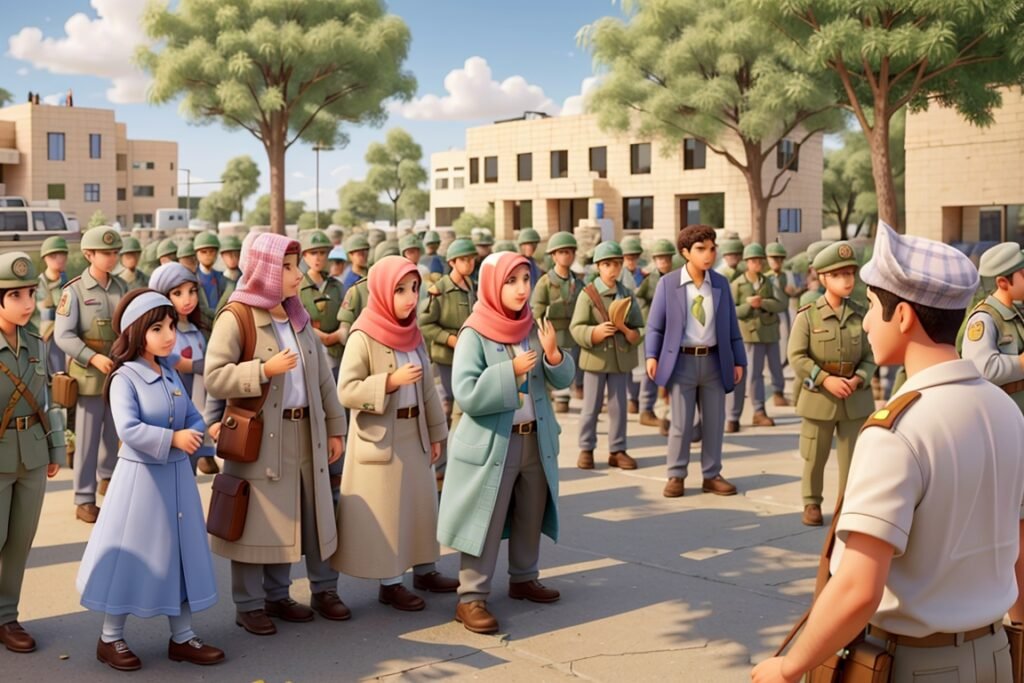The situation in the Gaza Strip has entered its third day, and it continues to capture global attention. Regrettably, numerous lives have been lost during this conflict, with the majority of casualties being innocent bystanders. Recent developments in the ongoing dispute demand our attention.

Recent Developments
Let’s begin by examining the most recent developments in this complex and volatile situation.
- Israeli Military Operations: On the third day of the conflict with Hamas, the Israeli military declared full control over the Israeli towns under occupation. However, Israel issued a warning, cautioning that militants might still be active in these areas. Tragically, the conflict has already claimed at least 700 Israeli lives and left another 2,400 people injured since the surprise attack by Hamas.
- Human Toll: According to Palestinian sources, yesterday morning in Gaza saw 560 deaths and over 2,700 injuries. Israeli rescue agencies, under the direction of David Adam, have mobilized teams to respond to casualties in the Jerusalem area. Simultaneously, the Palestinian Red Crescent reported that Israeli army fire seriously injured a Palestinian in Beidoumar, a village in the West Bank near Hebron.
- Conflict Spills Over into Lebanon: The conflict has now spilled over into Lebanon. The Israeli military claims to have intercepted a group of armed individuals who crossed into Lebanon near the town of Dara’a with the assistance of helicopter gunships. As many as six people may have been involved in the incident, resulting in two fatalities, three injuries, and one person who fled across the border into Lebanon. However, there has been no official count of these extremists. In response to this, Israel was targeted with missiles fired from inside Lebanon, prompting Israeli counterattacks on the launch facilities based in Lebanon. Notably, Hezbollah, a group sponsored by Iran, has denied responsibility for the recent attack.
- Mediation Efforts: Reports suggest that Qatari mediators are in contact with Hamas leaders to discuss the release of Israeli hostages. The Qatari negotiators have allegedly demanded a swap, which includes the release of 36 detained Palestinian women and children, and the United States is said to be assisting in these negotiations.
Background and Context

To understand the complexities of this ongoing conflict, it’s essential to delve into the historical and geopolitical factors that have contributed to this crisis.
- Gaza’s Unique Situation: The Gaza Strip, a 41-kilometer-long territory, is home to over 2.3 million people, making it one of the most densely populated areas globally. Israeli and Egyptian border controls have severely restricted the movement of people and goods, resulting in a dire humanitarian situation.
- Historical Tensions: This conflict has deep historical roots. Hamas, which has controlled Gaza since 2007, has been responsible for numerous attacks against Israel over the years, firing thousands of missiles or allowing others to do so from its territory. Israel, in response to these attacks and citing self-defense, has launched numerous airstrikes on Hamas and imposed a blockade on the Gaza Strip since 2007. Iran has been a consistent source of support for Hamas, providing weapons and training. The Gaza Strip, with a population density among the highest on the planet, is under Israeli airspace control, while both Israel and Egypt regulate the movement of people and goods across their borders. The United Nations estimates that nearly 80 percent of Gaza’s population requires humanitarian assistance, with approximately 1 million people in daily need of food aid.
Causes
The recent attack by Hamas came as a surprise, but there were underlying factors that likely contributed to it. Palestinians in the Israeli-occupied West Bank have experienced a surge in violence, possibly prompting Hamas to launch attacks and initiate a media campaign demonizing Israel. It is likely that Hamas seeks to pressure Israel into releasing some of the approximately 4,500 Palestinians currently held in Israeli prisons, as captivity is a sensitive issue for all Palestinians.
Geopolitical Implications
This conflict extends beyond the immediate parties involved and carries significant geopolitical implications. Iran and Hamas are against the possibility of a peace pact between Israel and Saudi Arabia, and a united response from the Arab world may play a crucial role in this matter.
Challenges and Security
Israel, known for its well-funded intelligence services, encountered a significant breach in security during this attack, demonstrating the challenges of securing the Gaza-Israel border. Cameras, ground motion sensors, and routine army patrols are in place, but they proved ineffective in preventing the breach.
Economic Impact
The conflict also has implications for global markets. Despite neither Israel nor the Palestinian territories being major oil producers, the Middle East remains the source of over a third of the world’s oil supply. The recent bombings have already affected oil prices, with a significant increase in the price of Brent crude oil, a global benchmark, and U.S. crude oil prices have also risen.
Conclusion
As the situation continues to evolve, we remain committed to keeping you updated on this critical conflict. Our thoughts are with all those affected, and we hope for a swift resolution that brings peace and stability to the region.
Outro
Thank you for joining us for this comprehensive analysis of the ongoing Gaza conflict. Stay informed and check back for more updates as this situation unfolds. Your vigilance and interest in global events are greatly appreciated.